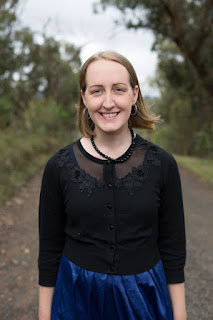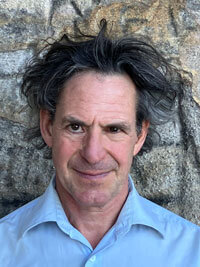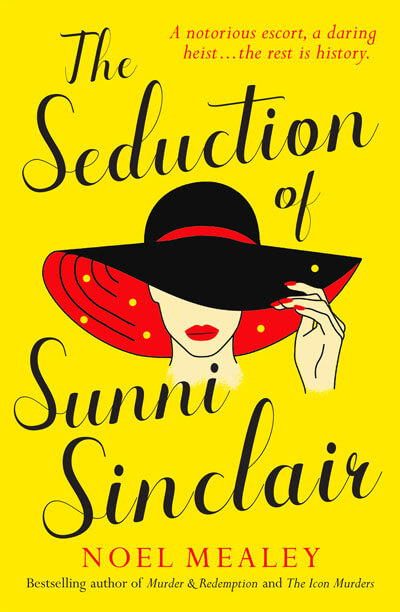Kathy Kituai

Kathy Kituai, diarist, editor, poet, creative writing teacher was founder and facilitator of the Limestone Tanka Poets is never happier than when working with other writers and artists. Apart from publishing two tanka collection with Amelia Fielden, she has published poetry with numerous poets, was awarded Arts ACT funding to work with a potter, Fergus Stewart, in Scotland to produce Deep in the Valley of Tea Bowls. Nitya Bernard Parker improvised music for their CD, The Heart Takes Wing. Composer, Rosemary Austin created a musical Script The Lacemaker, the poem Elizabeth Dalmon danced to at Tillies and The Fringe – South Australia Writing Festival.
Kathy was an assistant editor for the Institute of PNG Studies, tanka ed- itor for Cattails, and Muse magazine, is published in Japan, Canada New Zealand, India, UK, USA and Australia, was president and vice president
of The Fellowship of Writers, a host of Poetry Readings at Manning Clarke House, the Steering Committee for the Weereewa Lake George Arts Festi- val, and Arts ACT funding committee. She has judged literary competitions and co-judged the Sanford Goldstein International Tanka Competition. Accolades for her free-verse include CJ Dennis Award, St Kilda Literature Competition, Banjo Patterson Poetry Award (equal second), Somerset Po- etry Prize, (runner up), The Broadway Poetry Award (finalist), and she was awarded two ACT Critic awards for her teaching. Her tanka have also been successful in the Mainichi Japanese Tanka Award, Tea Towel Award (Re- sponses to the art of Otagaki Rengetsu), the Fuji Tanka Award, Eucalypt Scribbler’s Award and Ribbons People’s Choice Award.
Sample
Hooked
Most mornings you are at the Dickson Wetlands, a man with a rod in hand, straw hat squatting on silver hair, wheelie parked safely at a distance. Why do we never talk? What do you hope to catch? Redfin or perch? I am told they’re seeded in the Molonglo River and drift downstream to these wetlands. Do you, like me, contemplate the way children who coast here in a pram, trawl the sky overhead, having no words for vastness and unimagined hues? Can you recall a time you skittled pebbles across a creek just to see how often they touched the water yet kept going? Will you reel in old ways of doing things once new to you as a lad, look fish you catch in the eye, hit them on the head before removing the hook? They say fish have too small a brain to contemplate anything, and never feel pain. Would your steps falter if you pondered on why fish writhe in ice buckets five hours before one last breath?
Dilemma
Lake Burley Griffin, Canberra
This is not the first kangaroo to vault a lake’s wall
and be engulfed in water nor the last to be prized
for its ability to rise
10 feet in the air
tail and hind legs a tripod keeping the balance
How to jump back again
Does the splash as kangaroos collapse,
whack against the wall?
Do shadows of the mob reflect in the lake
as they creep forward?
Does sunset grace their silhouettes
with cerise and golden rays
or do darker skies deepen
when members of their mob fall?
Someone must have loved the wall circumnavigating the lake
was proud of it, and rightly so
to be commissioned to build it
fifty years ago
A wall can only speak
of its purpose brick by brick
Kangaroos can only keep upright
if their hind legs are not hindered
We can only avoid drowning
in the futility of words
speak of cadaver
rootless as driftwood
observe their corpses
There is a move afoot
to renew Lake Burley Griffin’s wall
restore this barrier from wind
ensure pelicans, swans, and bush hens
are safe
This is not the first kangaroo
to vault a lake’s wall
and be engulfed in water.
Crimson Fur Flaring
Edinburgh, Scotland
I was steadfast about one or two things: loving foxes and poems …
– Mary Oliver
How I loved to run my four-year-old fingers over a figurine of a vixen
head resting on her forefeet
tail wrapped like a scarf around each paw
I didn’t know of their taste
for chickens back then
nor did I conceive how they dug under barb wired coops
to slaughter sleeping chicks
one blood-drenched hen dragged to the den
Today – urban pups
cavort over and under refurbished planks of wood
in metropolitan sites
the way skulks of old pranced across fallen branches of pine birch oaks in backwoods meadowland
TODAY – Vixens sit in the glooming crimson fur flaring tongues caressing tails and fragile chins of hungry pups as tenderly as any mother’s touch.
Confined to brick
and mortared city streets high rise buildings
car yards fast food stalls late night shopping malls what can wildlife hunt?


























IP (Interactive Publications Pty Ltd)
In this collaboration, the Australian poet, Kathy Kituai, travels to Scotland to spend three months interacting with the potter, Fergus Stewart, who produces beautiful art through the use of his hands and creative eye. While appreciating the time and patience he exhibits with his craft, Kituai displays her own artistic talent by using images and words to express what she sees and feels.
they limber up …
he with clay centred
on the wheel
she with pen on paper
steadying each word
In the introduction, Kituai notes that “although poets use less physical energy they can be weary at the end of a day’s writing. Fergus and I came to the conclusion that the main difference between pottery and poetry, was only an extra ‘t’ in pottery.”
Perhaps that’s true, for it seems there are many similarities between these two artists, including knowledge and skill for their chosen art form, as well as prolonged concentration, patience, and a willingness to experiment and takes risks with their pots or poems. Just as potters take handfuls of wet clay and mould it into vases, bowls, cups, and pots for us to use in our daily lives, poets use words and images to mould their thoughts and ideas, enriching the world in which we live. Stewart shows us his work through colourful photos, Kituai reaches us through the printed word, and there’s a lovely balance between the two throughout this collection.
for all their talk
on poetry and pots
the wheel spins …
look at what might be said
simply without words
no handle
or spout for this vessel
just five lines
pouring from the nib
to sip or savour
For the reader, Deep in the Valley of Tea Bowls is like arriving at an intersection where a visual art meets a verbal one. Such a lovely place to stop, sit for a while, and simply enjoy what’s going on when cups, bowls, and pots seem to live lives of their own.
they linger
in the corner of the kiln
tea bowls
glazed in deeper hues,
smoke the colour of sorrow
gossiping
hands on hips
teapots
facing each other
on a wooden shelf
There’s a musicality to these poems and a smooth flow of words that seems to match the rhythm of the potter’s wheel. Many of the tanka sound effortless, which is surely not the case, but rather the result of a great deal of practise and considerable talent on the part of the poet. It takes time and attention to get the wording, the line breaks, and the use of sounds ‘just right.’ Consider the following tanka with its alliteration of 3 hard C’s and 4 W’s, the consonance of P’s in line 1 and the assonance of long A’s in line 5. And then there’s the sound of the
wind itself.
teapot and cup
her only companions
close by
the wind wailing
with loose window frames
Also in the introduction are these words from the poet:
“… the daily task of working with clay, be it plugging, glazing or trimming pots are much the same as writing zero drafts in a journal and moulding them, first to last draft, into poetry ready for publication.”
Her tanka go well beyond description. They leave the reader with dreaming room – a space to evoke our emotions and an invitation to ‘finish the poem’ which she’s begun.
to which
would Buddha bow …
this bowl
fitting the palm of her hand
or those the potter discarded?
every night
she raises to her mouth
his tea bowl
whose idea was it
to glaze it with the moon?
Deep in the Valley of Tea Bowls is a welcome addition to my tanka library. Nicely laid out with usually only one or two tanka per page, the book is broken into numerous sections, including ‘pots and poetry’, ‘a mantra of pots’, ‘no other spice’, and ‘set with a linen cloth’. The many pictures, by various photographers, add a wonderful splash of colour, while providing a good look at the potter’s workplace and finished products. The tanka, including the title poem, stand well on their own and speak for themselves.
Oh! to rest
deep in the valley
of tea bowls
the clay … the kiln
and craftsmanship
Kituai says, “I embarked on this journey wondering if I could take a handful of words, five lines, no more than that, and like potters, set out to create vessels in which to offer up food for thought.” Considering the consistency in the quality of her writing, the poignancy of many of her tanka, and her ability to convert imagery into words, her success is readily apparent.
– Susan Constable, Expositions
IP (Interactive Publications Pty Ltd)
Little did Kathy know when she first encountered Fergus Stewart plugging clay in a studio at Strathnairn Arts Centre, Canberra in the 1980s, she was about to embark on a friendship that would span more than two decades and lead to a unique collaboration between poet and potter. From the outset, she was not only fascinated by Fergus’ Aberdeen accent, but also the sheer physicality of his craft. In her prologue she says of potters, “knowing clay has a memory they learn its way of being and never lose sight of that fact.” For many of us tanka, too, is a way of being; moreover, it is a living being, born of breath and experience, something we can knead and mould into a form that expresses our deepest joys and fears, our full immersion in a given moment, our fundamental need to create, to make a mark. And afterwards, we can choose to keep that tanka-ware, or discard it; we can embellish it, or we can cherish it for its earthy simplicity.
can potter
and poet meet in each
turn of phrase?
test cones twist, melt
and break in the kiln
Throughout the collection, Kathy draws many comparisons between pottery and poetry, but as she says in her prologue, she and Fergus – whose beautiful work is showcased in full-colour photographs accompanying the tanka – concluded that the main difference between pottery and poetry is the extra ’t’ in the former. (How appropriate that the additional letter should be a ’t’ …) Potter and poet are both well acquainted with the is-ness of a moment; that space, however briefly inhabited, that reminds us we are beings, not doings.
– Claire Everett, Skylark
IP (Interactive Publications Pty Ltd)
they linger
in the corner of the kiln
tea bowls
glazed in deeper hues
smoke the colour of sorrow
Kathy Kituai and Fergus Stewart, who both endeavour to capture the ordinary moment in their art, came to the conclusion that the main different between pottery and poetry was only an extra ’t’. We are used to the term ‘Haiku’ and, to a lesser extent, ‘Waka’. Less so ‘Tanka’. Haiku, when translated into English, is usually shown in three lines, of five, seven and five syllables, whilst the Waka has two extra lines, each of seven syllables. Anyone who is curious about the birth of the Tanka as a poetic form, and now as a worldwide movement, need only consult our online library, Google.
The book itself explains how this rather tenuous coupling came about. I have to admit I knew of it before sort and hard covers were to claim a place on bookshelves, and I declare a further interest in agreeing to pen an Afterword.
In this ‘instant’ world it is nice to think of the slow emergence of thoughts and the discipline involved in writing poetic form, and the even slower process from clay to a three-dimensional form before a pot takes place on a shelf. Both end up as nurture for the mind or an object of contemplation and use: both challenge the sensitivity and sensibilities with closer contact.
Kathy Kituai moulds words and thoughts with skill and sensitivity; with equal effect, Fergus Stewart applies his craftsmanship to clay – I enjoyed both. The book was launched, with equal skill and sensitivity, by Meredith McKinney, visiting fellow in the Japan Centre at the ANU, and a classical Japanese scholar and translator.
– Milton Moon, Journal of Australian Ceramics
IP (Interactive Publications Pty Ltd)
In some sense ‘All art is about other art’ and in Kathy Kituai’s finely crafted, intelligent new collection, each tanka is an intricate bowl or cup that we read, fondle, sip from. Sometimes we are pulled to contexts of landscape (camping in the Australian bush, beside a loch in Scotland), sharing a meal, nuances in the practice of writing or throwing pots: to which / would Budda bow- / this bowl / fitting the palm of her hand / or those the potter discarded.
Behind these apparently effortless brief poems are the traditions that embrace Keats’ Grecian Urn, Wallace Stevens’ Jar , Douglas Stewart’s Silkworms, Kate Llewellyn’s Breasts and Izumi Shikibu’s Dairy: joyous / after it rains / tadpoles / swimming in tea bowls / thrown away as seconds.
Written over four years and including a sustained collaboration with Scottish ceramicist, Fergus Stewart, Kathy Kituai’s tanka constructs subtle narratives and scenes where writer and artist work, think and feel, yoked together and apart: can we believe / in life after death / nasturtiums/ growing on the windowsill / in a broken teapot.
The poems position us in or just behind Kituai’s awareness of textures, images and meanings. They are lyrics choreographing moments of illumination, interrogations. They explore tension between mobility and stasis, understanding and mystery, tactility and visualisation, tantalising fragments, both intense and languorous. Wonderful!!
– David Gilbey
IP (Interactive Publications Pty Ltd)
An artist can interact with a material, responding to its signals. Improvising: or can allow an idea to develop by reacting as it reveals its twists and turns. A richer blending develops when artist collaborate with each other, the diffusion creating something richer than either had imagined. This book is such a collaboration.
Clay can be wrought into objects that are not there all at once either in the making or in the final manifestation. How they become is not necessarily how they were envisaged and how they are seen by others than the maker is not necessarily how the maker sees them.
Poetry is like that – the richness of the single word, in a combination with other rich words, leads the mind to wandering through possibilities for meaning, creating new paths not envisaged by either the poet or the reader.
Combine the two and you have a rich source of stimulation. I quote Joseph Heller, author of Catch-22, in a short story titled “The Sound of Asthma”: ‘You lived intimately with something for a long time, certain you knew what it was, and then one day it turned out to be something altogether different.’
– Owen Rye